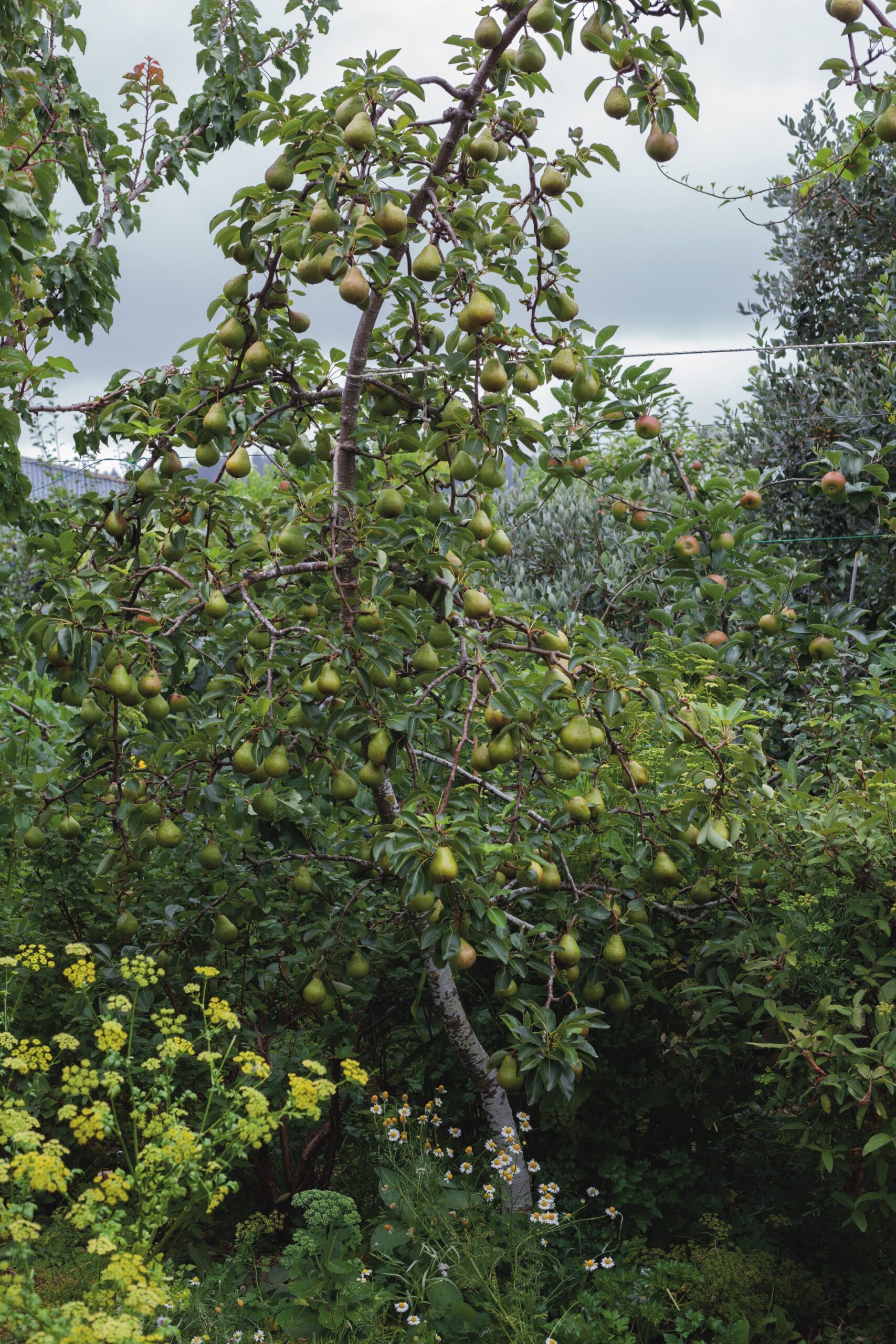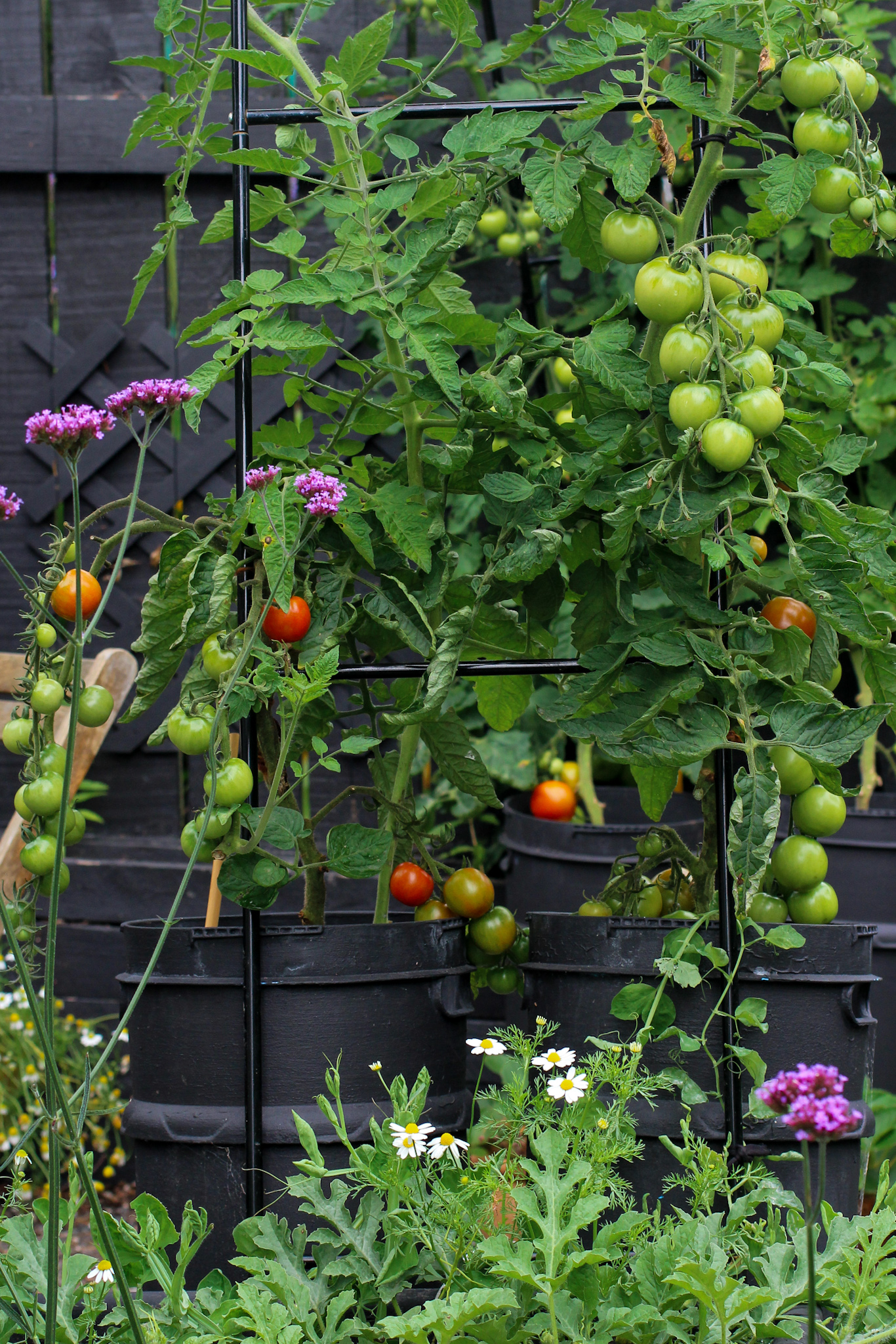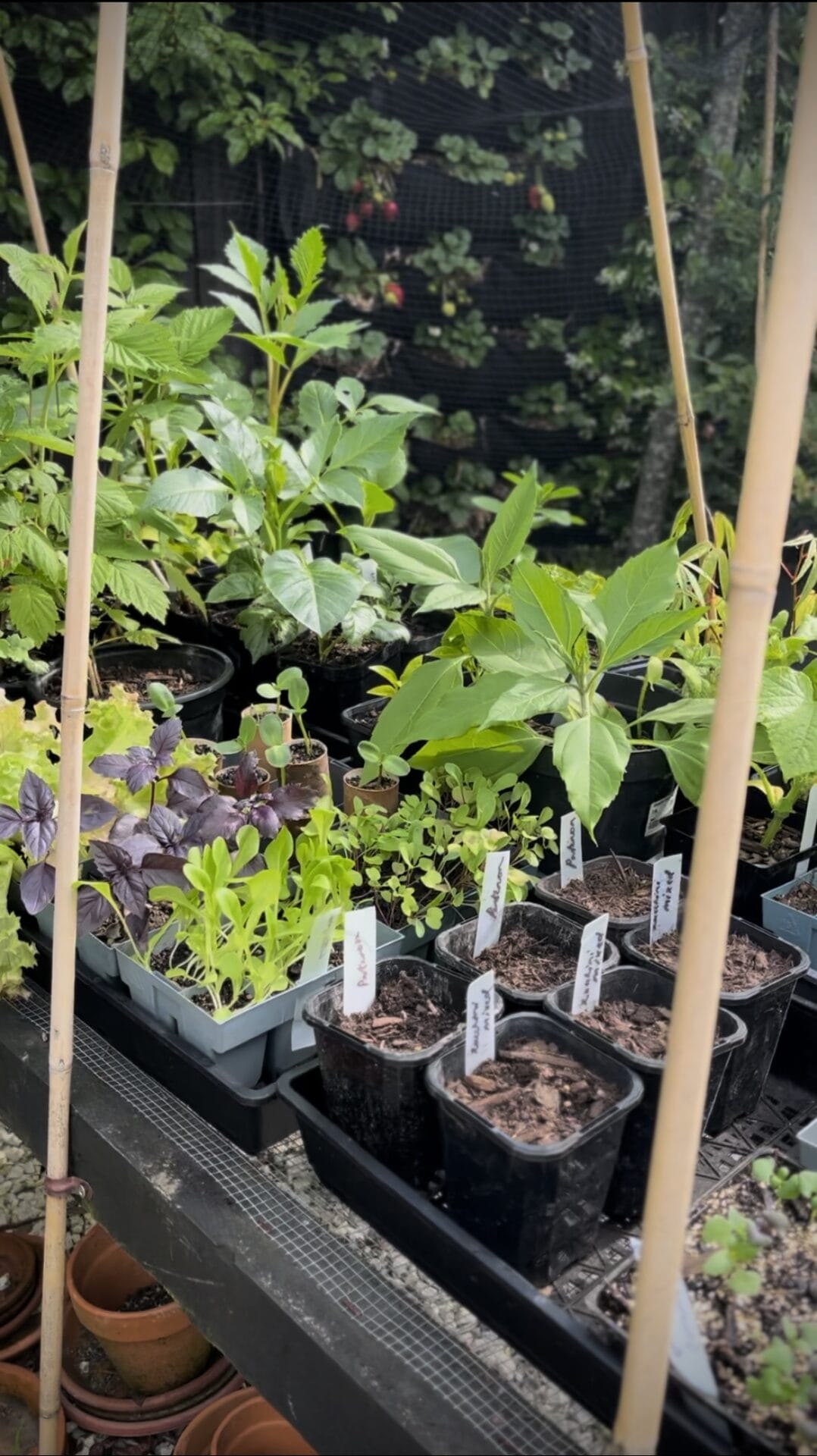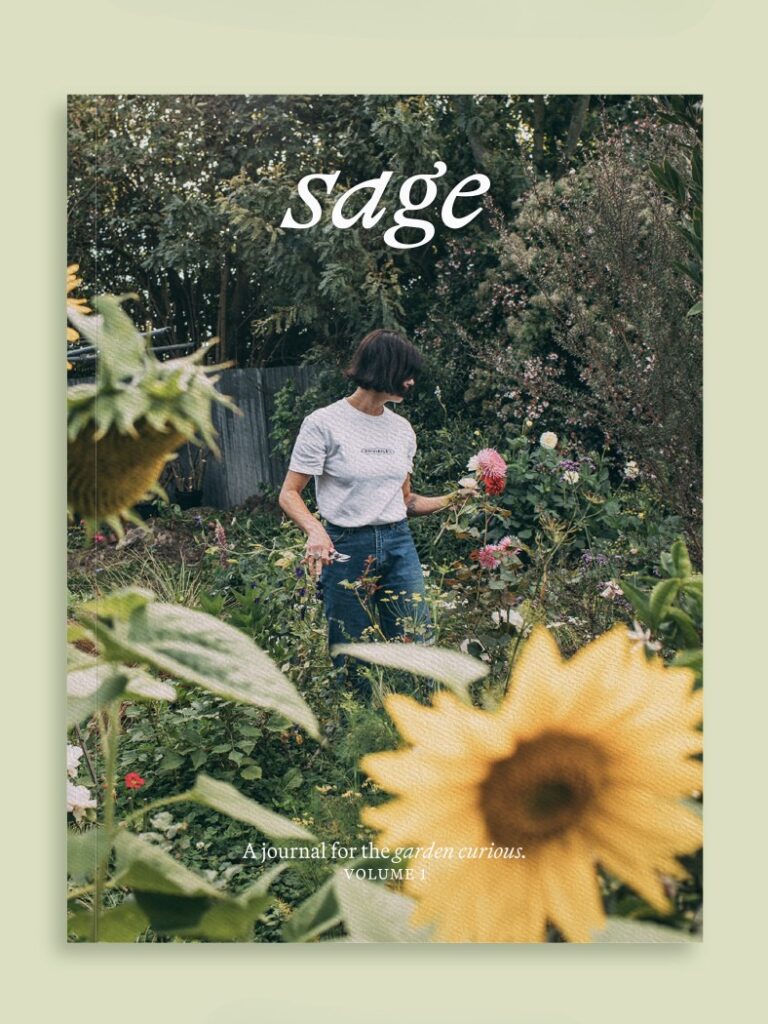Your cart is currently empty!
What is a food forest?
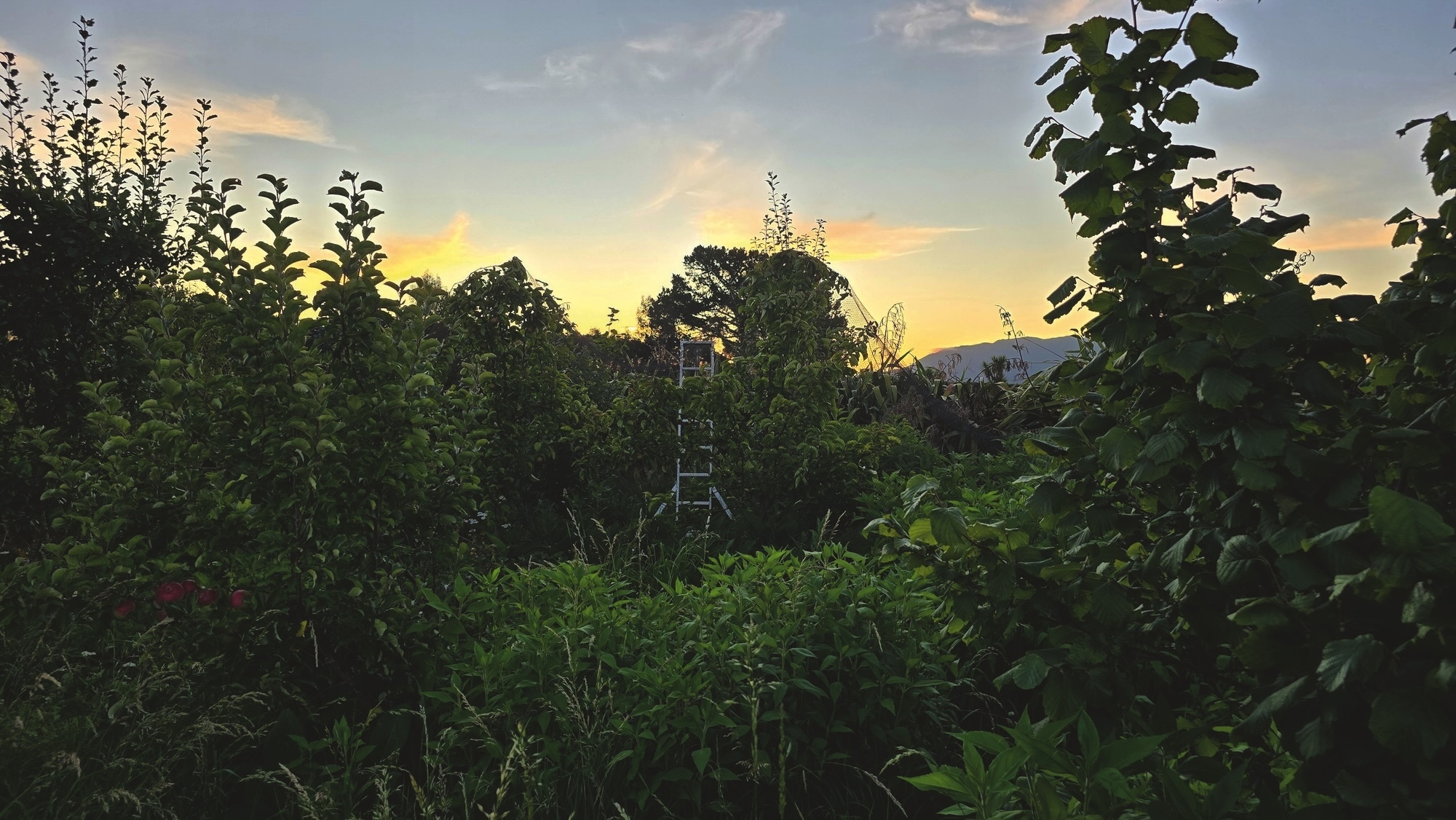
What is a food forest?
— This is an excerpt from The Food Farm: A life growing & eating our own food by Angela Clifford and Nick Gill
First featured in Sage Vol. 1
A food forest is a mostly perennial, diverse system of planting which mimics natural forest systems by having different layers with different functions. It’s made up of one, several or many guilds (depending on size). A guild is a community of plants that are designed to work collectively for the common good. The plants in the guild all provide different functions.
As it’s not a monoculture, a food forest is more resilient to shocks and is better equipped to fend off pests and diseases. It creates a diverse fungal and microbial community underground and encourages biodiversity above ground as well. The layers provide a great way to get a lot of food from a small amount of space.
To prune leafy plants so they don’t overtake light requirements of others, you can ‘chop and drop’ and this material can be left as part of the system, providing weed suppressing mulch, which also feeds the soil. Nitrogen-fixing plants are also an important element of a food forest because they contribute nitrogen to the soil.
Grass is the enemy of the food forest, but you need to out-plant or out-mulch, not weed. Begin by trying to eliminate as much grass as possible, for example, by occultation. This is covering the ground, excluding light.
These tips are for a temperate food forest. A sub-tropical one is very different. We need higher light levels here, right through to the ground. So, the food forest will feel more open than we imagine a traditional forest might be.
Think about what you already have that can be divided, propagated or grown from seed to populate your guilds. Many plants can play more than one role. Delicious, nitrogen- fixing, pollinator plants are winners!
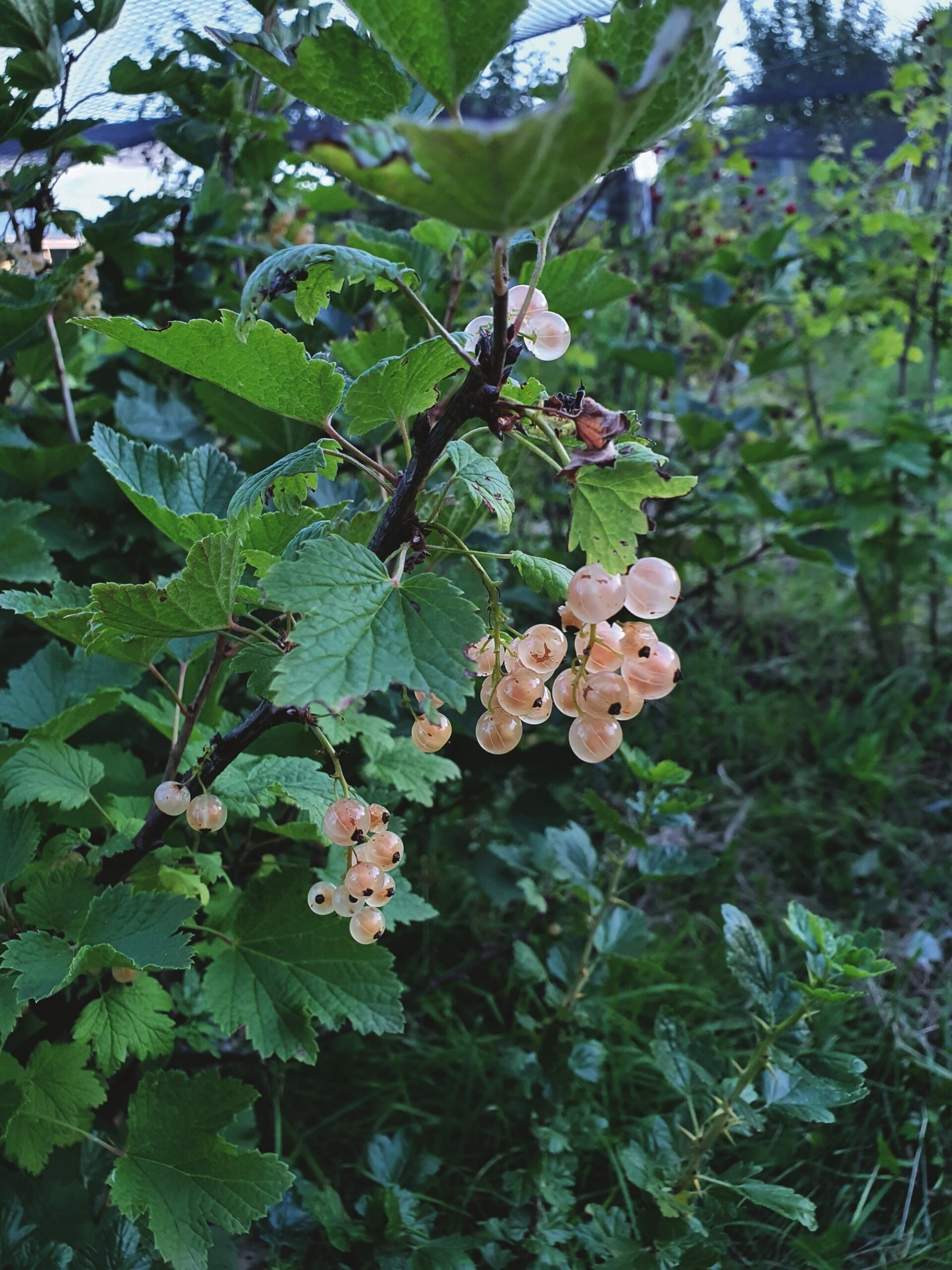
The Food Farm food forest layers
Canopy layer – Fruit, nut or other trees
These are mostly fruit- or nut-producing trees but they can also fulfil other purposes, such as nitrogen-fixing (Judas Tree or Chinese Yellow Wood), ornamental, medicinal or as fodder or wood trees.
Shrub layer – Berries & woody perennial shrubs
This layer can include anything from hazelnuts and elderberries to currants and blueberries. It can also include flowering shrubs, such as roses. Nitrogen fixers in this level can include silverberry, tagasaste, kōwhai or others.
Herb layer – Perennial and annual vegetables, herbs & flowers
Anything from globe artichokes to rhubarb, perennial alliums to herbs such as lovage or evening primrose, and all the ‘wort’ herbs. Also, herbaceous and other perennial flowering plants, such as achillea or penstemon. You could also add annual vegetables at this level, including tomatoes, saladings, etc. Another purpose (beyond harvesting for food and medicine) can be to attract pollinators and deter pests, for example, by planting alliums such as onions, chives and garlic. This is also the annual flower layer. Many of these can be grown from seed and are great gap fillers. Nitrogen fixers in this level can include liquorice, lupins and vetch.
Ground layer – Groundcovers
These can be anything that spreads out to cover the ground and helps to prevent grasses from establishing, including plants such as comfrey, nasturtiums, alpine strawberries, kūmara or pumpkins (both of the latter need plenty of sun). Nitrogen fixers at this level can include clovers and lucerne. Deep-rooted species such as comfrey act as phytoaccumulators – their deep roots pull up minerals from a different part of the soil profile. Other examples include sorrel, dandelion and daikon radishes.
Extras – Bulbs, tubers & vines
Bulbs and tubers can provide spring and summer interest for pollinators (and humans!) as well as be eaten (Chinese or Jerusalem artichokes). Vines can be used to climb up established trees and shrubs to maximise vertical space. Examples include grapes but also annuals such as melons or squash.
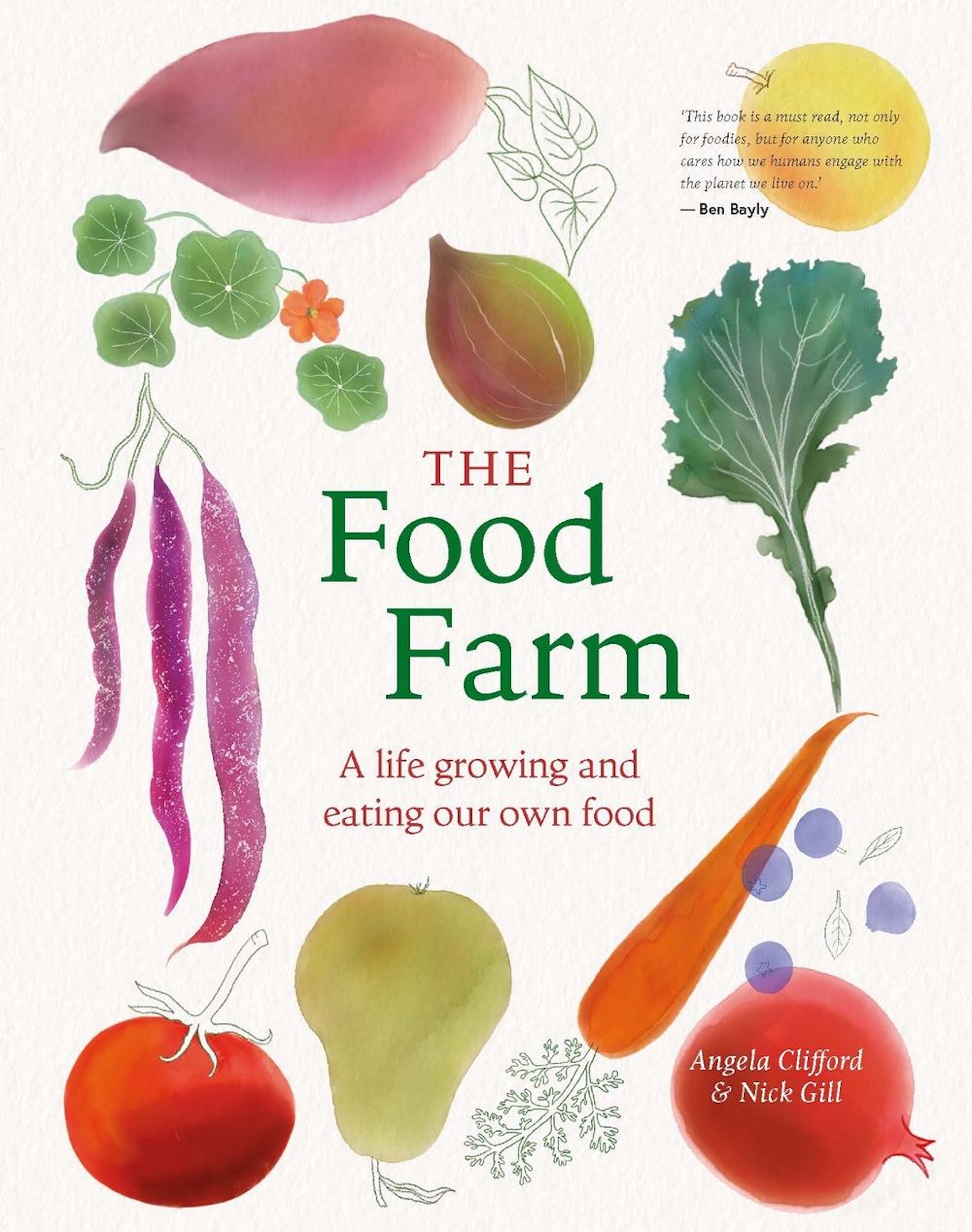
The Food Farm: A life growing and eating our own food by Angela Clifford and Nick Gill
Photography by Angela Clifford and Nick Gill, published by Bateman Books, RRP $55, on sale October 2025
Buy Now
